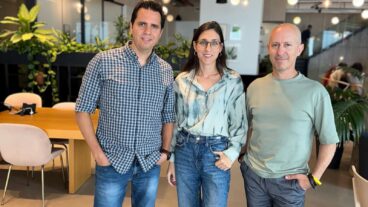Prof. Arie Zaban: This will mark the beginning of a whole new path that combines independence from fossil fuels with a greener, more sustainable future.
A Bar-Ilan Univeristy nanotechnology expert has invented a photovoltaic cell – which produces electricity from the sun’s rays – that could be dramatically cheaper to produce.
The cells, which are composed of metallic wires mounted on conductive glass, can form the basis of solar cells that produce electricity with efficiency similar to that of conventional, silicon-based cells while being much cheaper to produce, says Prof. Arie Zaban, head of BIU’s nanotechnology institute, who has just patented the technology.
The design is based on nanotechnology, which makes use of microscopic structures, and originally involved cells with an area of less than one square centimeter. But, Zaban said, his research took a “giant” step forward when he increased the size of the cells to 100 square centimeters.
“Initially, we created linked arrays of very small cells, which led to a loss of efficiency because the sunlight hitting the space between the cells was not converted to electricity,” Zaban explained. With much more surface area, the new array actively captures the sun’s energy and becomes “a practical choice for solar energy production,” he said.
Zaban’s cells feature a sponge-like array of microscopic “nanodots” arranged on flexible plastic sheets. The key to his system is the use of standard semiconductor material injected with an organic dye, which makes it become energy absorbent. Orionsolar, a Jerusalem-based company that has entered into a partnership with Bar-Ilan, is developing commercial applications for inexpensive, dye-based photovoltaics based on Zaban’s work.
“Given the state of the technology, I believe that the new solar cells will be available commercially within the next five years,” he said. “This will mark the beginning of a whole new path that combines independence from fossil fuels with a greener, more sustainable future.”
Another of his recent discoveries involves reducing the amount of platinum used in photovoltaic cells, another important step towards reducing production costs. “We’ve found a way to produce platinum nanodots … [which] reduce the amount of platinum needed by a factor of 40,” he said.
“Cost is an important factor in the success of any solar technology,” Zaban explained. “To become widely adopted, solar cells must generate electricity at lower cost than what we now spend on fossil fuels. At the same time, we have to make the basic infrastructure extremely affordable – because the third-world countries that stand to reap the most benefit from solar power usually lack the money to invest in it. By making cells more efficient and keeping material costs down, nano-based techniques are moving us closer to that goal.”
(Reprinted with permission from The Jerusalem Post)![]()
Slashdot It!![]()












